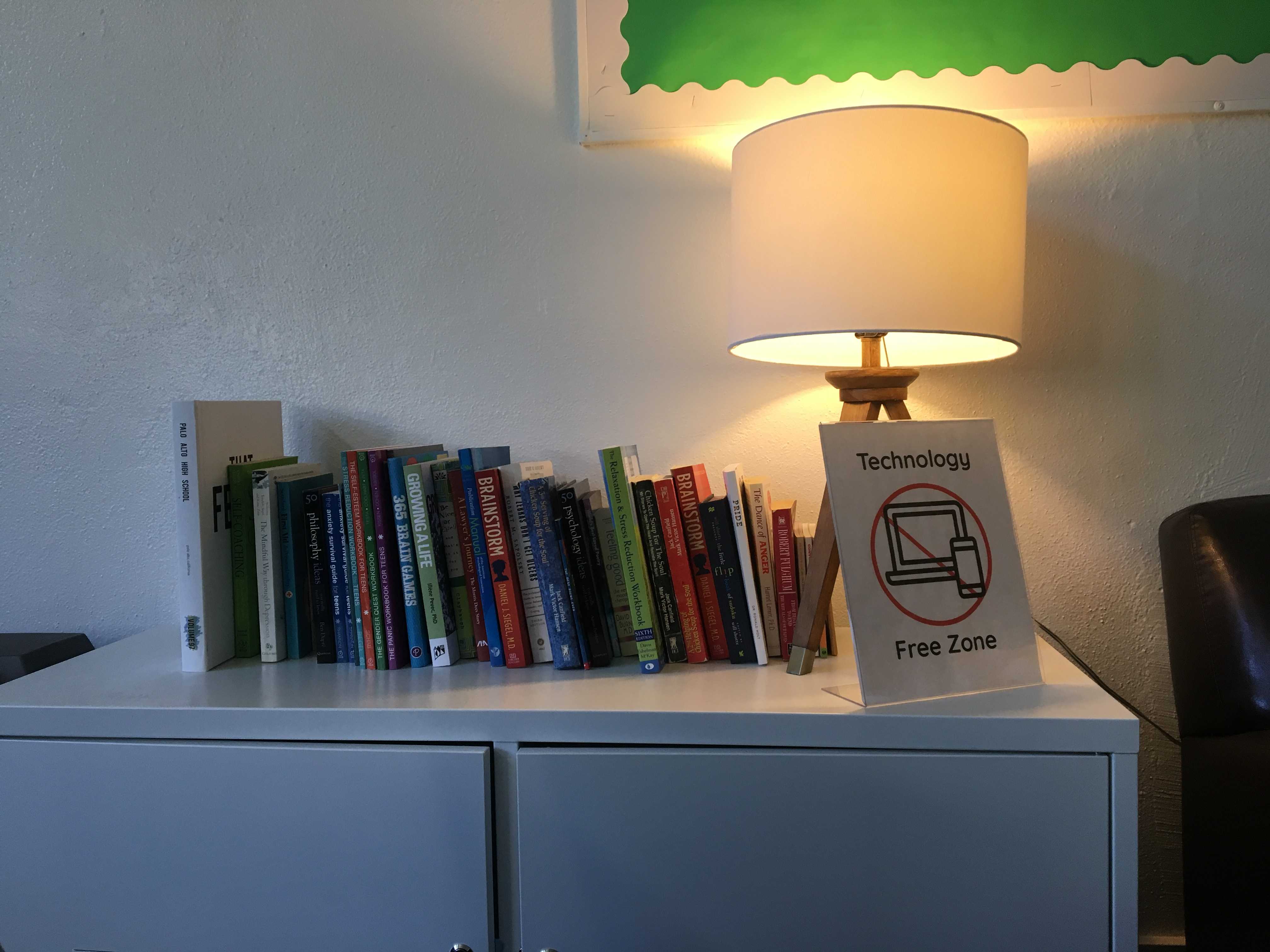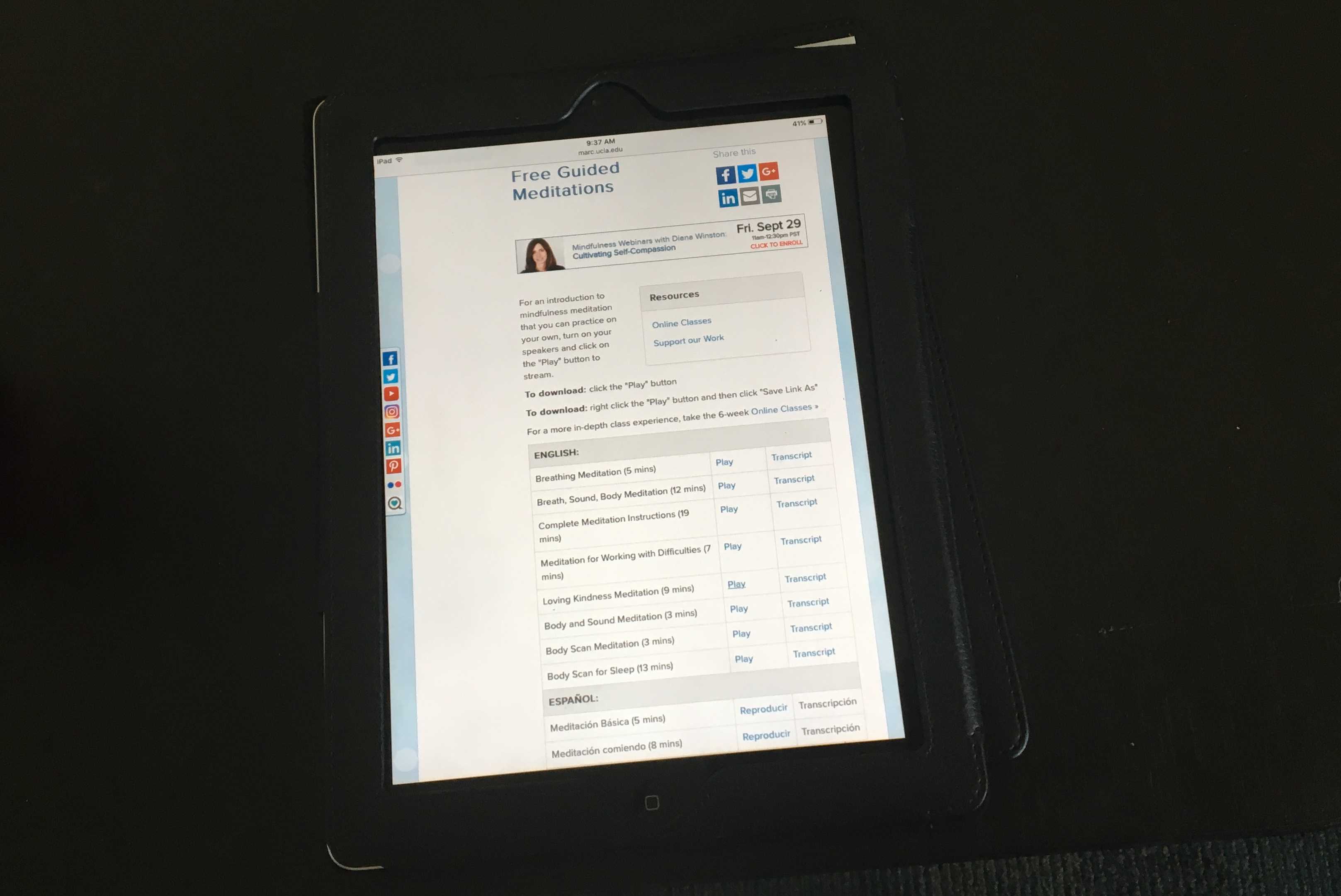
When students walk into the Wellness Center, they are greeted with the smell of essential oils, comfortable chairs, and calming colors. A small fountain, self help books, kinetic sand, and coloring books line the walls and scatter coffee tables. Wellness Center outreach worker Angelina Michael outlined the meaning behind the inclusion of these items.
“We want to create a sense of normalcy and a sense of openness and inclusion for this center, so that if students are having a hard time, they feel that they can come here,” she said.

Also featured in the center are iPads with mindfulness breathing guides loaded onto them. Wellness Coordinator Elizabeth Spector explained why the iPads are utilized.
“If a student is feeling stressed but doesn’t necessarily want to talk to someone, we can set them up with a mindfulness breathing exercise,” she said.
She went on to detail why an emphasis is placed on the practice of mindfulness. “Mindfulness is empirically based. It’s a method that’s been researched and proven to be effective in decreasing stress, decreasing anxiety, and decreasing symptoms of depression,” Spector said.

Spector then explained how she and the other Wellness Center workers would help a student who came in.
“Whoever is here — it may be me, Angelina [Michael], or our CASSY [Counseling and Support Services for Youth] therapist — will check in with you and ask what you need. If you were feeling stressed, and felt like you need to take a 15 minute break, we want to give you the space to do that, and also remind you that we’re here if you want to talk,” she said.
In a more complex situation, Spector said that a Wellness Center worker would take a different path.
“If you came in and said that you really needed to talk to someone, then we would assess your situation and then connect you with support,” Spector said.
Angelina Michael went more in depth on what support was available.
“It [the student’s situation] could be that you need to see a CASSY therapist immediately. We also realize that a lot of stress is induced from school related issues, so [if a student came in with this problem] we connect the student to the Guidance Office,” Michael said.
Michael, a Paly alumni, recounts that when she attended the school, there was no simple way to access wellness resources.
“Coordinated response, where the best interest of a student is being met, was not the case at all when I was here,” Michael said. “When I was here, I didn’t even know where ACS [Adolescent Counseling Services; the program CASSY replaced] was.”
Despite its general success as a safe space and easy access point for resources for students on campus, many remain confused as to how the Wellness Center functions, and what it’s purpose is. Spector defined it in simple terms.
“The Wellness Center serves as an access point for all students. Previously, students weren’t sure where to go if they needed support, so the Wellness Center is a one-stop shop for students to get connected to the resources that they need,” she said.
Spector continued to address student confusion, stating goals that the Wellness Center has for how it will function in the future.
“We want to be more visible, we want to be a place where all students feel safe, where they can come if they need to take care of themselves,” she said. “We want to reach students in a broader sense-not only with the resources that we provide here in the Wellness Center, but also with student outreach.”
Michael agreed with Spector.
“I think very much so the Wellness Center is a work in progress and a learning experience,” Michael said.
Michael then summed up their remarks by describing the Wellness Center in its purest form.“It’s a safe place to take care of yourself,” she said.

